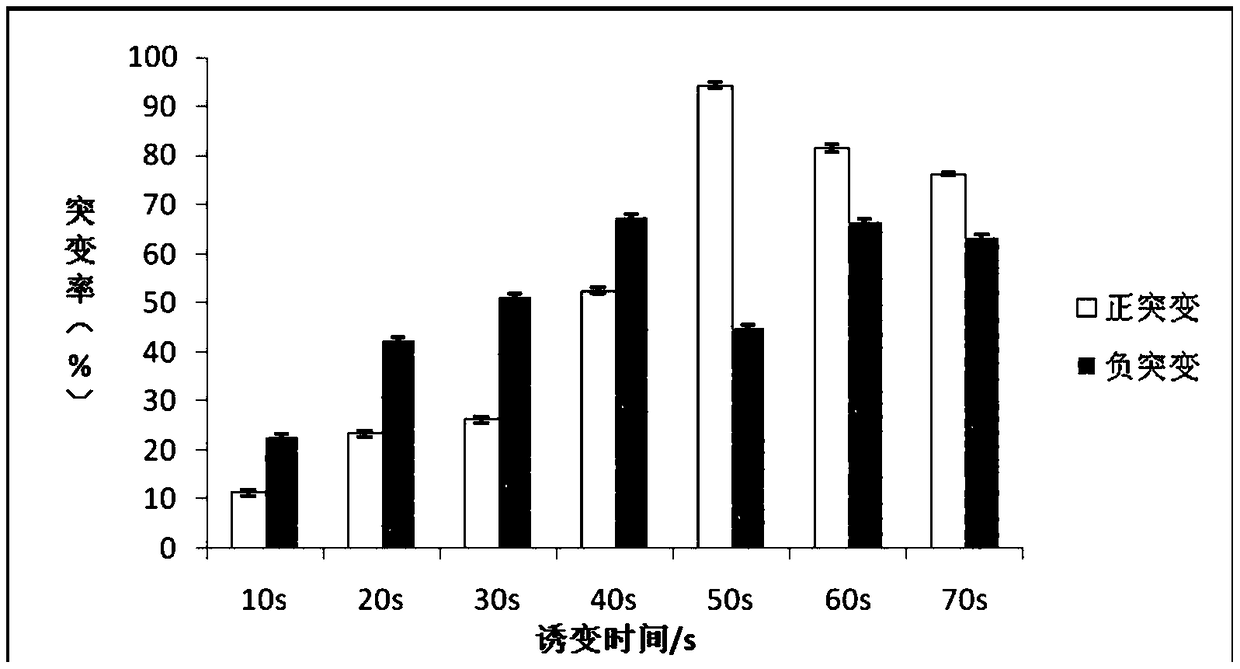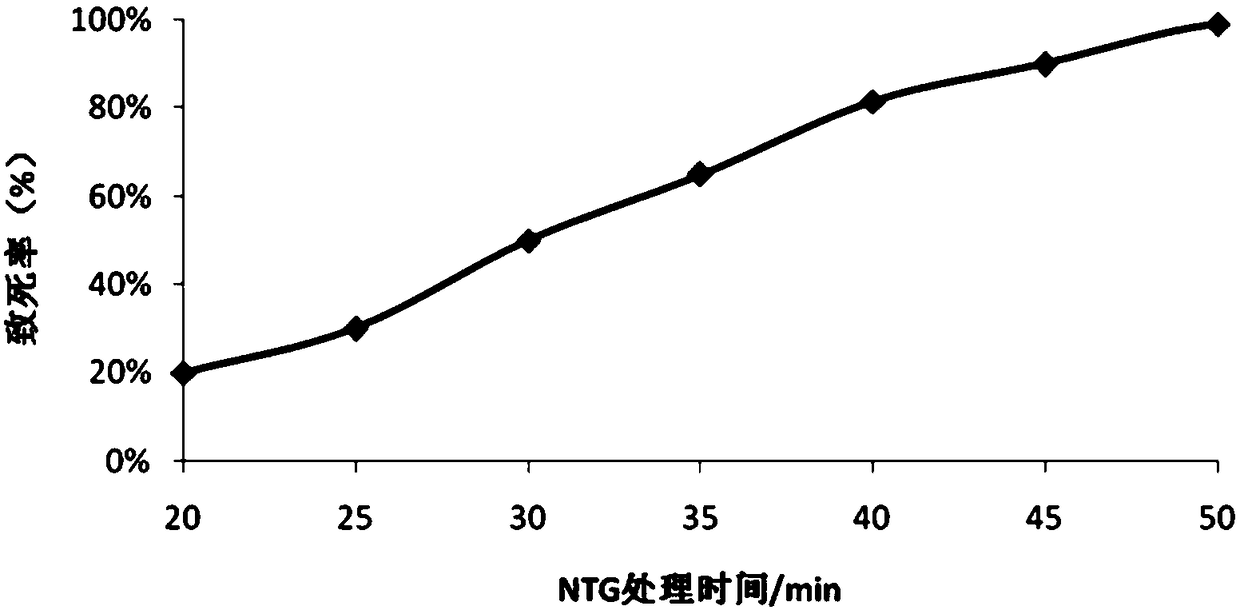Lactobacillus casei stain mutant strain for producing glutamine transaminase and use thereof
A kind of Lactobacillus casei, mutagenic strain technology, applied in the field of biological preparations, can solve the problem of failing to accurately measure the size of glutamine aminotransferase enzyme activity, not involving and the like
- Summary
- Abstract
- Description
- Claims
- Application Information
AI Technical Summary
Problems solved by technology
Method used
Image
Examples
Embodiment 1
[0064] Embodiment 1, experimental material
[0065] Starting strain:
[0066] 1. Lactobacillus casei is the frozen strain LC20170301 of our company.
[0067] 2. Lactobacillus rhamnosus mutagenized strain KJY11, the preservation number is CGMCC No.15421, and the preservation date is March 07, 2018.
[0068] 3. The Lactobacillus plantarum mutagenic strain KJY12, the preservation number is CGMCC No.15422, and the preservation date is March 07, 2018.
[0069] 4. The Lactobacillus zea mutagen strain KJY13, the preservation number is CGMCC No.15423, and the preservation date is March 07, 2018.
[0070] 5. Leuconostoc enterococcus mutagen strain KJY15, the preservation number is CGMCC No.15425, and the preservation date is March 07, 2018.
Embodiment 2
[0071] Embodiment 2, microwave mutagenesis Lactobacillus casei
[0072] Collect the domesticated strains and dilute to 10 7 / ml of bacterial suspension, placed in a microwave oven with a power of 500W, and the irradiation time was 10, 20, 30, 40, 50, 60, 70, 80, 90s, respectively. Take it out every 10s and use an ice bath for 10s to eliminate the thermal effect of the microwave. After refrigerated at 4°C for 12h in the dark, spread on the MRS solid medium plate, incubate at 37°C for 24h, count the colonies, and calculate the lethality.
[0073] Using 500 power to irradiate the bacterial suspension of Lactobacillus, the relationship between the lethality and the irradiation time is as follows figure 1 shown.
[0074] Lethal rate (%) = (total bacterial count without mutagenization treatment - surviving bacterial count after mutagenization treatment) / total bacterial count without mutagenization treatment × 100
[0075] It can be seen that with the increase of microwave time, t...
Embodiment 5
[0080] Embodiment 5, nitrosoguanidine mutagenesis
[0081] Nitrosoguanidine (NTG): Take 0.1g of nitrosoguanidine and add 10mL of acetone as co-solvent, after complete dissolution, take 1mL of nitrosoguanidine acetone solution and add 9mL of sodium phosphate buffer (pH7.4, 0.02mol / L) to prepare Prepare a nitrosoguanidine stock solution with an NTG concentration of 1 mg / mL.
[0082] Collect the cultured acclimated strains and dilute to 10 8 / ml of bacterial suspension. Then take 8 mL of bacterial suspension, add 2 mL of nitrosoguanidine stock solution, and the final concentration of NTG is 200 μg / mL, and set the non-mutated stock solution as a control.
[0083] Put the above-mentioned bacterial solution in a Erlenmeyer flask, shake on a shaking table at 37°C and incubate in the dark for 10, 15, 20, 25, 30, 35, 40, 45, and 50 min, respectively, and then add physiological saline to terminate the reaction; After the bacterial solution was ice-bathed for 2-3 hours to induce the p...
PUM
 Login to View More
Login to View More Abstract
Description
Claims
Application Information
 Login to View More
Login to View More - R&D
- Intellectual Property
- Life Sciences
- Materials
- Tech Scout
- Unparalleled Data Quality
- Higher Quality Content
- 60% Fewer Hallucinations
Browse by: Latest US Patents, China's latest patents, Technical Efficacy Thesaurus, Application Domain, Technology Topic, Popular Technical Reports.
© 2025 PatSnap. All rights reserved.Legal|Privacy policy|Modern Slavery Act Transparency Statement|Sitemap|About US| Contact US: help@patsnap.com



